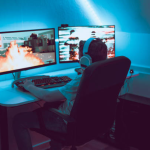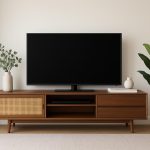In today’s competitive retail environment, businesses must go beyond simply selling products. Shoppers expect memorable experiences that not only meet their needs but also excite their senses and emotions. One of the most important yet often overlooked elements that help shape these experiences is the way a store presents its merchandise. This is where store fixtures and retail displays come in, working together to transform ordinary spaces into captivating shopping destinations.
Understanding the Power of Store Fixtures
Store fixtures form the foundation of any retail environment. They include shelves, racks, display tables, cabinets, and other structural elements that hold and present products. More than functional, fixtures are strategic tools that guide customer behavior and improve navigation within a store.
The right fixtures are designed with both aesthetics and practicality in mind. For instance, minimalist racks highlight luxury fashion items, while open shelving is often used in home décor stores to encourage browsing. Good fixtures also consider durability, space optimization, and flexibility to adapt to changing trends or seasonal products.
By investing in thoughtfully designed store fixtures, retailers ensure that their products are not just stocked but showcased in a way that encourages customer interaction and ultimately drives sales.
The Role of Retail Displays in Customer Engagement
While fixtures create the foundation, retail displays bring a store to life. These are creative arrangements designed to highlight specific products or themes, such as new arrivals, seasonal promotions, or best-sellers. A well-executed display doesn’t just inform customers about what is available; it tells a story, sparks curiosity, and creates emotional connections with the merchandise.
For example, a skincare display that incorporates natural elements like wood and greenery conveys eco-friendliness, instantly aligning with customers who value sustainability. On the other hand, tech retailers often use sleek, futuristic displays that resonate with innovation-driven shoppers.
Retail displays also serve as silent salespeople. A striking window display may be the reason a passerby decides to step inside a store. Similarly, in-store displays can encourage impulse purchases by highlighting complementary products. To achieve this, businesses often partner with professionals who specialize in designing retail displays that balance creativity and consumer psychology.
Creating Memorable Shopping Experiences
Memorable experiences aren’t just about visual appeal—they involve interaction, comfort, and consistency. Store fixtures and retail displays play an integral role in this by:
- Enhancing Navigation: Customers can easily find what they need when fixtures are organized logically, reducing frustration and improving satisfaction.
- Encouraging Exploration: Displays strategically placed in high-traffic areas invite customers to discover new products they might not have planned to purchase.
- Creating Emotional Connections: Thematic displays that resonate with customer lifestyles and values leave lasting impressions.
- Reinforcing Brand Identity: Fixtures and displays should consistently reflect the store’s unique branding, from luxury minimalism to bold creativity.
When executed correctly, these elements work in harmony to transform shopping from a transaction into an enjoyable journey. Customers are more likely to return to stores that offer them a sense of discovery and delight.
Trends Shaping the Future of Fixtures and Displays
The retail industry is evolving rapidly, and fixtures and displays are adapting to keep up. Some emerging trends include:
- Technology Integration – Interactive screens, digital price tags, and augmented reality displays are becoming common in modern retail stores.
- Sustainability – Eco-friendly materials such as reclaimed wood, bamboo, and recycled metals are increasingly being used in fixtures and displays.
- Modular Designs – Flexible fixtures that can be reconfigured quickly allow stores to adapt to seasonal changes and shifting consumer demands.
- Immersive Experiences – Displays are now focusing on creating full sensory experiences, incorporating lighting, sound, and even scent to enhance engagement.
These innovations not only keep stores relevant but also provide customers with engaging, future-forward shopping experiences.
Final Thoughts
In a world where online shopping is convenient and fast, brick-and-mortar retailers must offer something more—an experience that cannot be replicated on a screen. Store fixtures and retail displays are key to achieving this. They combine functionality with creativity, shaping environments that delight customers and encourage brand loyalty.
For retailers, the investment in well-designed fixtures and displays is more than a design choice—it’s a business strategy. When done right, they elevate the store, strengthen customer connections, and drive long-term success.
Lynn Martelli is an editor at Readability. She received her MFA in Creative Writing from Antioch University and has worked as an editor for over 10 years. Lynn has edited a wide variety of books, including fiction, non-fiction, memoirs, and more. In her free time, Lynn enjoys reading, writing, and spending time with her family and friends.















